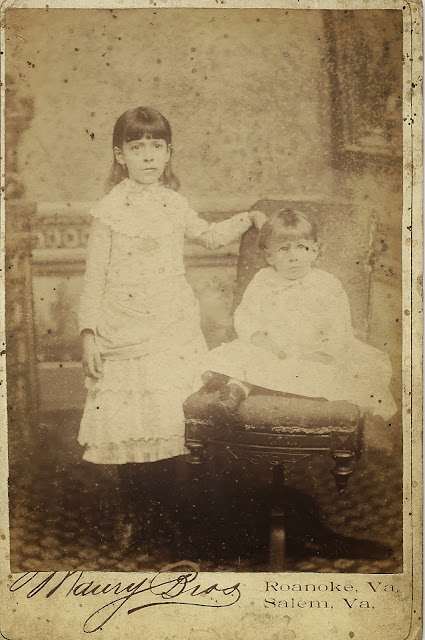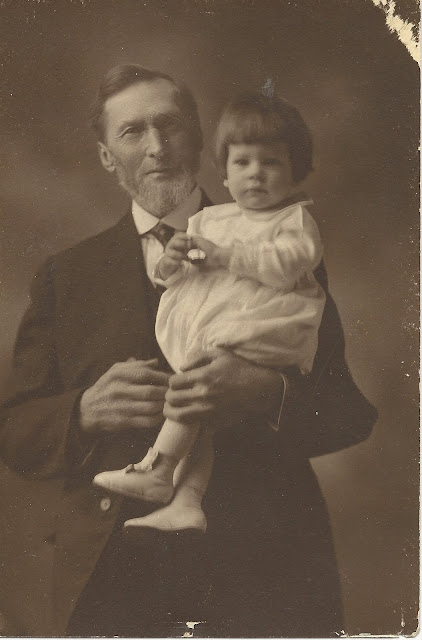Christopher Orr
One of Christopher Orr's wives, most likely Sally Quimby
Christopher Orr was born in Durham, Maine [1] on May 23, 1800 [2,3,6]. He married first Catherine Freeman of Farmington, Maine [2]. After her death, he married Sally Quimby, who hailed from Starks, Maine [2]. His third wife was Margaret (Burbank) Foster, from Farmington, Maine [2].
According to an ancestor sheet [4] compiled by one of Brian's relatives, Christopher and Catherine had one child:
i. Ebenezer, b. November 21, 1819 in Phillips, Maine.
Christopher and Sally had five children, all born in Phillips, Maine [4,5,6]:
ii. Newman A., b. April 5, 1824
iii. Christopher Jr., b. September 1, 1827, m. Phoebe Whitney
iv. Katharine F., b. May 5, 1829
v. Emmons G., b. June 5, 1831
vi. Daniel Tracy, b. September 4., 1836, m. Annie Melissa Inman in Exeter, Maine on August 22, 1868, d. September 4, 1922.
Christopher and Margaret had four children [4]:
vii. George G., b. June 7, 1848, m. Sophia True, d. May 20, 1924.
viii.Mary, b. November 17, 1850, m. Edmond Whitney, d. June 22, 1905.
xi. Margaret A., b. about 1850, m. John McKenney.
x. Hannah B., b. about 1854, m. a Calden.
When I was looking over Brian's tree, I realized I had not put in parents for Christopher Orr. According to the ancestry sheet [4], Christopher Orr was the son of Joseph Orr, descended from the Orr's Island Orrs, and Hannah Tracy. However, when I tried to verify this, I ran into some difficulties. While some references list Joseph Orr as the husband of Hannah Tracy [e.g., 7], others list her husband as Henry Orr [e.g., also 7].
According to his son Daniel T. Orr's death certificate, Christopher was born in Durham, Maine. I looked through Durham's vital records [8], and while I could not find a birth record for Christopher Orr, I did find a marriage record for Joseph Orr and Hannah Tracy, who were married in Durham on November 28, 1799 (intention filed November 16, 1799), which I've included below:
Additionally, I found mentions of a Clement Orr in Durham's records. For those of you who are familiar with the Orrs of Orr's Island, you may recall that Clement is a common name among the Orr's Island Orr families. Thus, it seemed feasible that Joseph and Clement were brothers from Orr's Island who had moved to Durham.
Orr's Island is part of the town of Harpswell, Maine, so I looked up the Harpswell vital records. While scans of the original Harpswell vital records are not available digitally yet, I found a transcription of Harpswell's birth records [9]. While there were many Orr births recorded in Harpswell, the Joseph Orr born in 1780 seemed to match the Joseph Orr on the ancestor sheet [10]. As the record shows, Joseph had an older brother, Clement, born in 1772.
I scanned through all of the birth records (the above image was only the first page) and found no children listed for either Joseph or Clement Jr., which would make sense if Joseph and Clement raised their families in Durham. Mystery solved? Not quite.
There was one more confounding factor. Note that next to Joseph's birth, his death date is given as November 11, 1860. However, Hannah (Tracy) Orr married Asa Gould on November 16, 1806 [8], suggesting that her husband had died sometime before 1806. I wondered whether the 1860 death date could have belonged to another Joseph Orr and been falsely attributed, and indeed there seems to be reason to believe this is the case.
If you look at the Harpswell birth records above, you'll notice that there is another Joseph Orr, born July 1, 1802. Notably, he also has the same parents. I'm not an expert on nineteenth century naming traditions, but one thing I have noticed from researching my own family tree is that in some families, it was common to name a child after a sibling who had died. Another possibility is that the elder Joseph may have gone by another name, which could explain the Joseph/Henry confusion. However, if he did go by Henry, notice that his parents had a son named Henry in 1805, which would suggest he probably was no longer living at that time. This does not of course prove that the elder brother Joseph died about 1802 or 1805, but it does lend credence to the possibility that he died much earlier that the date typically attributed to him. However, whether Joseph was alive at the time of his brother's birth does not actually matter; the key takeaway is that there was another Joseph Orr.
On FindAGrave, someone had uploaded a photo of the tombstone of the Joseph Orr born in 1802 [11]. His death date is given as November 11, 1860, the same date attributed to his elder brother. His tombstone is in Harpswell, so it would make sense that his death would be recorded among the Harpswell vital records. While I have not seen the original Harpswell vital records, it seems likely that whoever recorded his death accidentally attributed it to the wrong brother.
Here is how I see things. Christopher Orr was most likely born in Durham, Maine [1]. Hannah Tracy married a Joseph Orr in Durham in 1799 [7,8]. According to at least one record, Hannah Tracy had a son Christopher Orr [7], and according to other sources [e.g., 2,4], Joseph Orr, who hailed from Orr's Island, had a son Christopher Orr. Christopher is not a name you see amongst the records of the Orr's Island Orrs [9], but Hannah Tracy's father was Reverend Christopher Tracy [7,8]. Thus Chrisopher Orr most likely was the son of Joseph Orr and Hannah Tracy. Furthermore, the Joseph Orr who died in 1860 was not the Joseph Orr who settled in Durham, but rather a younger brother by the same name [9,11]. The Joseph Orr who settled in Durham likely died around 1802 or perhaps 1805.
If you have further information about Christopher Orr's parentage, I'd love to see it. Some of my references are still a little tenuous, I feel, so additional sources would be nice.
Here is how I see things. Christopher Orr was most likely born in Durham, Maine [1]. Hannah Tracy married a Joseph Orr in Durham in 1799 [7,8]. According to at least one record, Hannah Tracy had a son Christopher Orr [7], and according to other sources [e.g., 2,4], Joseph Orr, who hailed from Orr's Island, had a son Christopher Orr. Christopher is not a name you see amongst the records of the Orr's Island Orrs [9], but Hannah Tracy's father was Reverend Christopher Tracy [7,8]. Thus Chrisopher Orr most likely was the son of Joseph Orr and Hannah Tracy. Furthermore, the Joseph Orr who died in 1860 was not the Joseph Orr who settled in Durham, but rather a younger brother by the same name [9,11]. The Joseph Orr who settled in Durham likely died around 1802 or perhaps 1805.
If you have further information about Christopher Orr's parentage, I'd love to see it. Some of my references are still a little tenuous, I feel, so additional sources would be nice.
Note: To view the records from FamilySearch, you will probably need a free FamilySearch account.
[1] See son Daniel T. Orr's death certificate, in the Maine Vital Records, 1670-1921 database on FamilySearch.
[2] See The Orrs of Maine - The Family of the Golden Shield by Charles N. Sinnett, published in the Lewiston Evening Journal on February 18, 1922.
[3] See the 1850 and 1860 censuses for Phillips, Maine.
[4] See ancestor sheet for Christopher Orr.
[5] See Phillips, Franklin, Maine computer printout; births or christenings, 1756-1871 from FamilySearch.
[6] See Phillips, Franklin, Maine Town and Vital Records, 1822-1851, from FamilySearch, image 150.
[7] See Genealogy of the Tracy Family: Based on the Historical Address Before the Fourth Annual Reunion of the Tracy Family: Held at Gouldsboro, Maine, August 19, 1899 by N. B. Tracy, with additions by Mrs. Lucy M. Tracey:
[8] See Durham, Androscoggin, Maine Town and Vital Records, 1789-1931 from FamilySearch.
[9] See Harpswell, Cumberland, Maine computer printout ; births and christenings, 1735-1862 from FamilySearch.
[10] See ancestor sheet for Joseph Orr.
[11] See headstone of the other Joseph Orr.










.JPG)


























